Search

Poised for growth
With the mining segment getting government support in a big way, the truck and tipper segment will witness growing demand in the days to come.
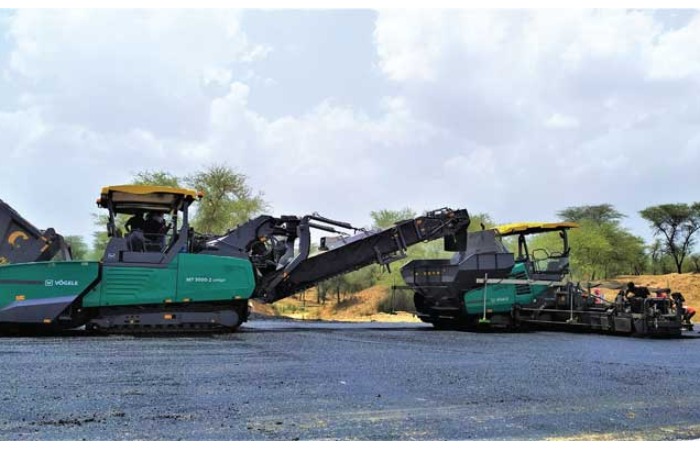
Vögele Mobile Power Feeder Increasing Footprints In India
Since 2006, the VÖGELE mobile power feeders, are in use in various national highway projects in Haryana, Rajasthan, Uttar Pradesh, and Gujarat.
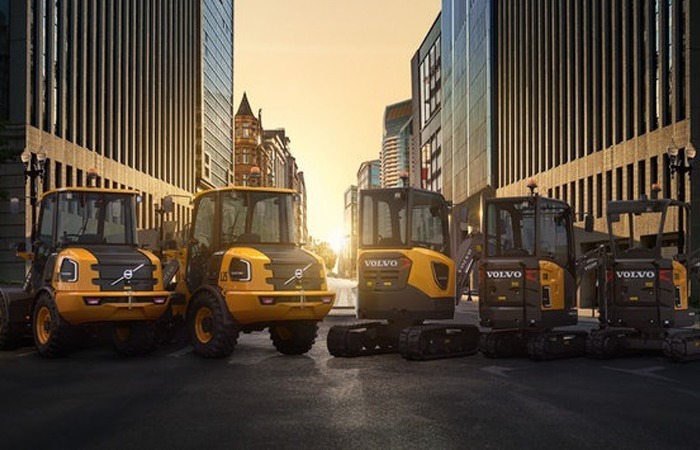
Volvo CE introduces 3 new construction BEVs
Roads and highways sector is considered to be the most vibrant infrastructure segment where a lot of activities ongoing consistently for a long time.

NHAI to develop over 600 wayside amenities
n a major move to improve commuting experience on National Highways for both passengers and truckers, the National Highways Authority of India (NHAI) will develop world class ‘Wayside Amenities’ at more than 600 locations across 22 states along the National Highways in the next five years, out of which 130 is targeted for development in 2021-22.

Adaptability and agility are our core strengths
Gagandeep Singh Gandhok, Senior Vice President – HD Truck Business, VECV, shares his views on the market scenario and the company’s plans.
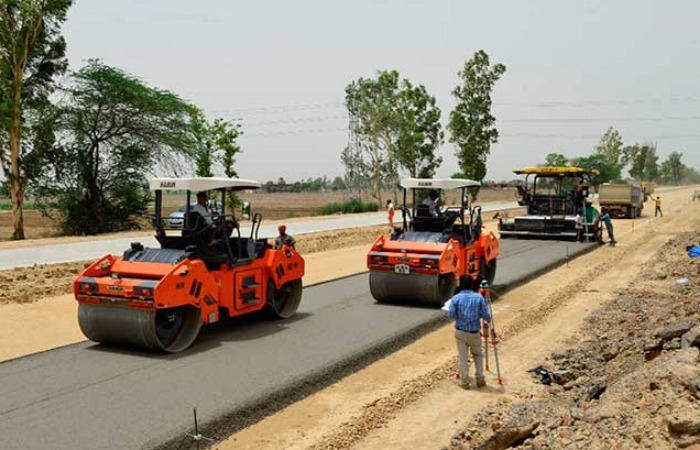
Road Equipment: Road to Recovery
The Ministry of Road Transport and Highways (MoRTH) has big plans of constructing expressways, national highways, state highways and rural roads in the coming years. However, any uncertain economic situation in future may affect the recovery of the market as this will affect the payment of contractors, financing and thus equipment mobilisation.
NHAI invites bids for 5th bundle of highway projects on TOT model
NHAI has invited bids for the fifth bundle of National Highway projects under Toll-Operate-Transfer (TOT) in Gujarat.
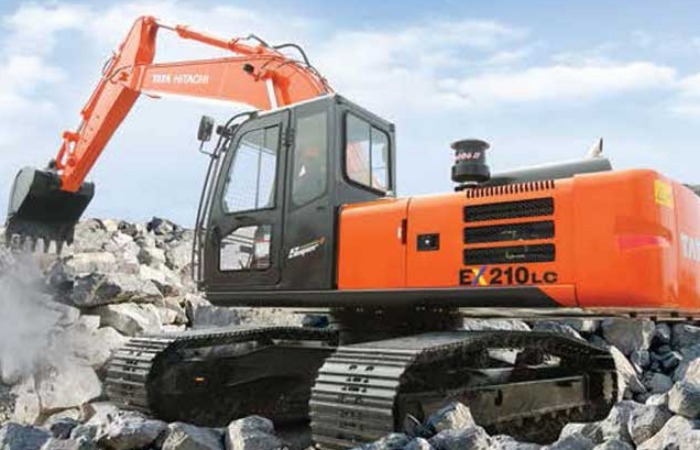
Challenging Terrain
The hydraulic excavator market in India has been impacted by the slowdown after the onset of COVID-19 pandemic.

Highway construction yet to pick up: CRISIL
According to a CRISIL Research report, the highway construction in the country is yet to gather momentum in spite of the relaxation for construction sector across the country.
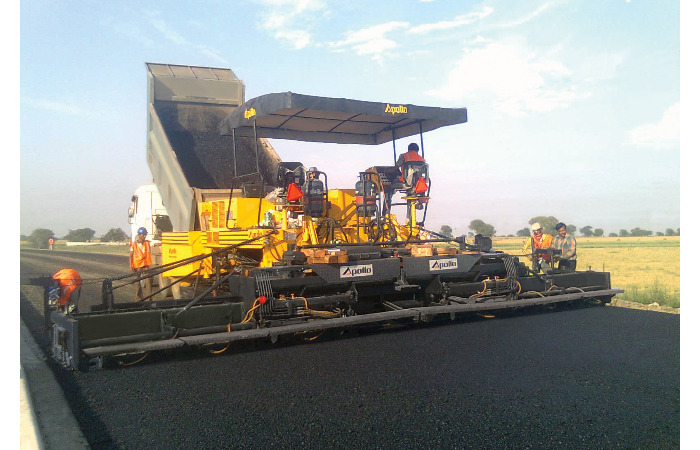
Highway construction yet to pick up: CRISIL
The highway construction in the country is yet to gather momentum in spite of the relaxation for construction sector in the country.
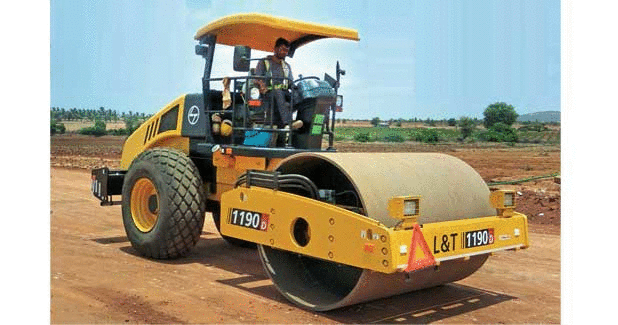
THE ROAD AHEAD
The roads and highways sector is expected to bounce back soon with the government's corrective measures to combat slowdown and the large number of projects planned in the coming years. The road equipment players are bullish on the future growth prospects.

The Eleventh Hour Is Here!
By 2025, the construction market in India is expected to emerge as the third-largest globally.

300 ongoing national highway projects to be completed by March 2019
The Ministry of Road Transport & Highways has identified about 300 projects for completion by March 2019, based on a review of over 700 ongoing national highway projects in the country. Of these, about 100 projects are likely to be completed by December 2018.

Hydraulic breaker demand to prevail
Excavators with hydraulic breakers are used in urban construction projects, road construction, metro projects, etc. In crowded areas, this is one of the most cost-effective ways of excavation as it avoids drilling and blasting which is dangerous, expensive and has many other problems.

Excon 2017 marks revival of Indian CE industry
After a continuous phase of sluggish market and recession, the construction equipment sector is on the verge of a turnaround now. The sector has received a boost with the government's renewed focus on road building, as a result the market grew by 16 per cent in 2015, and further by 39 per cent to peak in 2016.
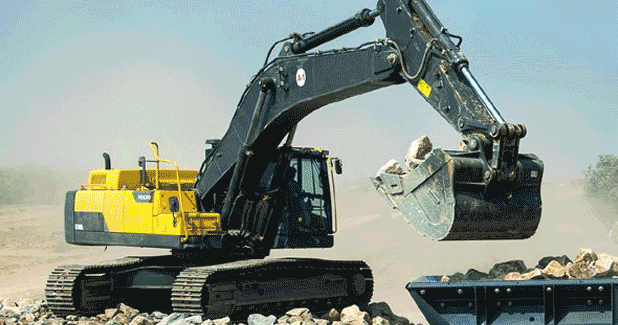
Crushers & Screens| High on Demand
With infrastructure and construction sector on fast-track, especially road sector, aggregate processing has become essential to support the construction activities with a matching pace.
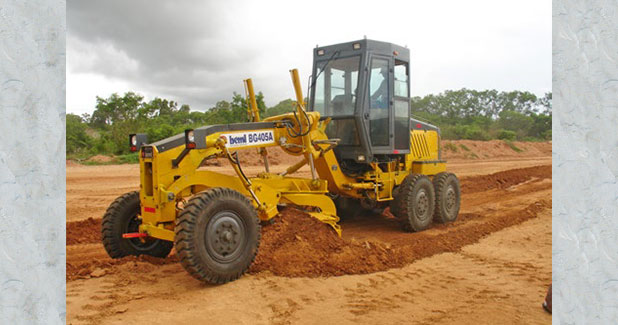
Essential for Road Building
Commitment towards infrastructural development and faster implementation of road projects to desired specifications are driving the growth of the motor grader market in India.
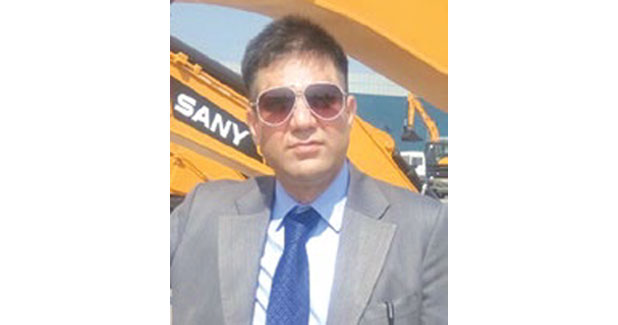
We see a great opportunity for growth with SANY
Our company was founded in 1994 in Jammu. Initially we started with road construction equipment and maintenance machinery for roads and gradually we diversified into construction equipment and earthmoving machinery business.

One-time fund to revivelanguishing highway projects
The Cabinet Committee on Economic Affairs chaired by the Prime Minister Narendra Modi approved a one time fund infusion to revive and physically complete languishing national highway projects under the extension of provision available for BOT (Toll) projects to BOT (annuity) projects.
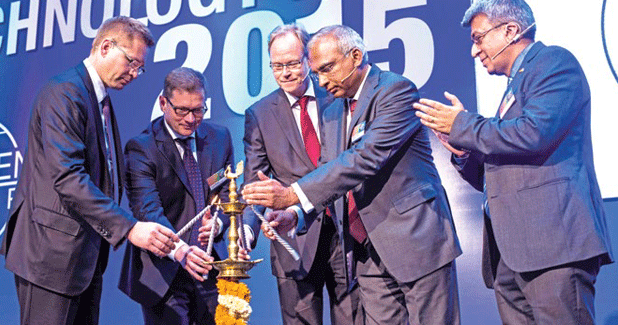
First Kleemann Screen Rolled Out in India
Wirtgen India rolled out the first Kleemann range screen from the newly inaugurated plant, and is set to launch a slew of products for the Indian market.
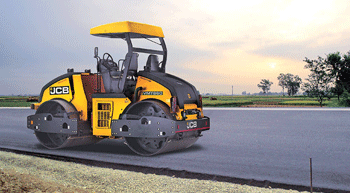
The Road Ahead
The need for better infrastructure is pressing with India?s rapid urbanisation and burgeoning middle class. Some 590 million people will live in cities by 2030, and could account for 70 per cent of Indian GDP, according to a McKinsey report.

The Road Ahead
The need for better infrastructure is pressing with India?s rapid urbanisation and burgeoning middle class. Some 590 million people will live in cities by 2030, and could account for 70 per cent of Indian GDP, according to a McKinsey report.

Road 2 recovery
Despite the present day gloom in the market, the future for the construction equipment sector, especially for the road equipment segment in India, still holds much potential as this sector has a profound and immediate impact on the country?s economic growth. Off-Highway Research is optimistic about the growth in demand for road equipment and forecasts growth at a CAGR of 12.67 per cent over the next five years. Agith G Antony finds out more about the positive vibes in the industry.

The new generation of Dash-3 pavers from Vogele will be launched at Excon 2013.
n addition to production, we are also focusing on optimising our process, improve efficiencies in operations and at the same time, stepping up investment in sales and service network for the future, says Ramesh Palagiri, Managing Director and CEO, Wirtgen India. Excerpts from the interview.

Magma is a well-diversified business with six business lines
No equipment group is able to drive growth which is primarily due to the fact that the overall infrastructure and mining segments have been impacted by various factors, says Sumit Mukherjee, National Sales Head, Magma Fincorp. Excerpts from the interview.

What's up doc?
At the 3rd Equipment India conference in September 2012 when I was sharing my views with the equipment captains over coffee, they were apprehensive and I was optimistic.

Intelligent compaction
Road construction experts as well as OEMs, vouch for the efficacy of intelligent compaction technology lauding the way it has led to improved roads. It is one of the most significant technological developments for the road construction sector

Road builders may have to pay fine to exit road projects
Union Road Minister Oscar Fernandes has said that road developers in the country will not be blamed for delays in regulatory procedure but have to take responsibility for their own faults and may have to pay up to 1 per cent of total project cost as penalty for exiting. If there is any fault on the part of the concessionaire, then there will be a penalty of a maximum of one per cent, of the total project for the developer to exit the project, he said.

Special road development scheme for Kerala: Fernandes
For development of roads in Kerala, National Highway Authority of India (NHAI) plans to have a special scheme considering the problem of shortage of land faced by the state, Union Minister for Road Transport and Highways Oscar Fernandes said in Thiruvananthapuram on July 15.The details of the scheme would be announced after clearing certain technical parameters, he said.

Getting back on track
Growth prospects in the current fiscal, 2013-1314, were expected to be sluggish, with no clear indicators towards a surge in demand for construction equipment. However, the recent developments in otherwise depressed business sentiments are something to cheer about.

Odisha govt to complete NH works in scheduled time
Land acquisition is to be paced up to complete the National Highway projects within the scheduled time, the Odisha government has decided. The State Chief Minister Naveen Patnaik, who reviewed the progress of different NH projects, asked the officials to expedite the process for getting forest clearances.

Compacting Technology Set to Improve
The new trend in technology is faster compaction by achieving the required density at a lower operating cost. Also, the latest equipment is designed with features to improve operator safety, comfort and maintainability.

Caterpillar has vibratory soil compactors in the operating weight range of 4.5T?18.5T
The popular model being offered in India is the CS533E (11T Class) which is required to meet the National Highway Project requirements in India,? says Pankaj Dara, Associate Vice President - Construction, TIPL. 0 - - 15633 14 102 2011-05-02 00:00:00.000 Equipment India Hamm is the technology leader in compaction equipment
?Our existing manufacturing facility can produce 400 machines annually and plans are on for further expansion in the coming years,? says Girish Dixit, Head - Engineering & Design, Wirtgen India. In a freewheeling chat, Girish speaks about the industry trends.
Tell us about the range offered in compaction equipment and also their unique features?
Wirtgen India offers Hamm-11T soil compactor, 9T asphalt compactors and 24T pneumatic tyre rollers (PTR) for the Indian market. Hamm compactors come with German design and technology mainly featuring excellent operator comfort and safety. The equipment are powered by a fuel-efficient and highly durable water-cooled engine.
Hamm is the technology leader in compaction which has been awarded many design prizes for its latest innovations. Recently, it was awarded iF-Gold award 2010 also called the Design Oscar for new HD+ series of asphalt compactor. The GRW 280, rubber-wheeled rollers received the iF Design award 2010.
Higher quality level of the components used in Hamm compactors increases the durability of the equipment. Better serviceability and reduced maintenance frequency with less fuel consumption results in the lower operating cost of the equipment.
What is the existing manufacturing capacity for these product lines?
Our existing manufacturing facility can produce 400 machines annually and plans are on for further expansion in the coming years.
What is the rental scenario for these products?
Currently, Wirtgen India is not in the rental market and is only selling the new equipment in the retail and corporate segments, rental companies.
Are these products compliant with the Bharat stage III emission norms?
Yes, the equipment built after April 2011 will comply with Bharat stage III emission norms.
How do you look at the replacement/ repowering market for the units sold which are not complying with Bharat stage III norms?
As per the regulations, no replacement/re-powering is required for the units built with Bharat stage II norms.
Why vibratory compactors over static ones and what is the vibration effect in compaction over the static loading?
Vibratory compactors develop dynamic force in addition to the static load and total applied force is the sum of dynamic force and the static weight of the machine. For example, Hamm 11T soil compactor generates 24T dynamic force and with 6.8T static weight at the drum will induce 30.8 tonne load on the ground. The advantage of using 11T vibratory soil compactor versus 30 tonne static compactor is evident from this.
The vibratory compactor with drum vibrating at higher amplitude will result in compacting the higher lift thickness and achieving the required density compared with the static roller. In the static roller, the linear load is not uniform over the width of the machine (one front roller and two rear rollers) which results in uneven mat finish. In the vibratory compactors, the linear load is uniform along the width of the drum.
To what extent do soil conditions determine the selection of compactors? Could you tell us the reasons?
Type of soil and conditions like moisture content decides the achievable density within the required number of passes. It is important to select the suitable compactor which will develop the required force to achieve the density with lesser number of passes on the appropriate lift thickness.
What determines the maximum achievable density?
Density depends on the soil characteristics (type of soil) and optimum moisture content (OMC) present in the soil. Generally, 95 to 100 per cent density can be achieved with 11T soil compactors on the appropriate lift thickness.
?To have maximum return on investment, the equipment should have maximum productivity and less rework,? says SM Roy, Chief Executive Officer, Lanco Infratech. In an exclusive chat with Equipment India, Roy elaborates on the evolution of compacting and grading technologies. Excerpts from the interview.
How, over a period, have the methods of compaction and grading evolved and to what extent does the contracting fraternity use the advanced equipment and methodology?
The first road roller was horse-drawn; this was followed by steam and diesel rollers. For a long period, static compactors of various sizes were used. The introduction of vibratory compactor in 1946 opened a new era in construction industry.
A few decades ago, grading was done manually or with tractor dozers where operator skill was important for accuracy. Advanced technology has made the grading work simple by giving option of automatic slope and elevation offsets. GPS navigation and machine guidance systems have reduced the amount of external surveying required.
Almost every construction project or site preparation requires some kind of grading and compaction. The Indian contracting community extensively uses the graders and compactors for various purposes based on size and extent of projects.
Why vibratory compactors over static ones? What is the vibration effect in compaction over static loading?
Static compactor functions with its own weight and hence compaction is confined to the top soil layer. Vibratory compactors use a mechanism to create a downward force in addition to the machine's static weight thereby affecting the top layers as well as deeper layers. Vibration moves through the material, setting particles in motion and moving them closer together for the highest possible density.
To what extent does the soil condition determine the selection of compactors?
The desired level of compaction is best achieved by matching the soil type with its proper compaction method. Clay is cohesive; its particles stick together requiring high impact force to compact. Hence, the sheep-foot roller is the best choice. Best compaction of granular soils is possible with shaking or vibratory action. For mixed type of soils, it is a good idea to choose the compactor appropriate for a larger percentage of the mixture.
What is the return on investment on a compactor and on a grader?
To have maximum return on investment, equipment should have maximum productivity and less rework. Production cost depends on depreciation, maintenance, fuel, working hours and labour. Smaller machines cost less in terms of ownership but more in labour and vice versa. In general, for each situation, one should study equipment productivity and try to strike a balance to get better value for money.
Could you tell us about the density achievable from the range of compactors? What determines the maximum achievable density?
The maximum achievable density depends on fill type, compactive efforts and moisture content and it varies from 2.1 tonne/cu m for well graded gravels to 1.5 tonne/cu m for highly plastic clays. Most of the compactors can achieve maximum fill density with different compactive efforts and efficiencies.
What are the variants in compaction?
The variants in compaction are soil type, moisture content, lift or fill thickness, compactive efforts or number of passes of compactors.
Selection Criteria:
A selection criterion for graders and compactors is given below:
? Size, weight and machine power.
? Steering, direction control and maneuverability.
? Functional automation.
? Multi-tasking machine with various attachments.
? Maximum possible thickness of the lift (for grader).
? Accuracy of the grading (for grader).
? Range of vibration frequency (for compactor).
? Working and downtime.
? Ownership and maintenance cost.
? Availability of trained manpower to use the machine.

The Road Ahead
With more than 60 per cent of the cargo movement done by India's large network of roads, the road-building sector in the country has offered major growth opportunities for the construction equipment industry.

Road Equipment: Green Light for Road Equipment
With more than 60 per cent of the cargo movement being done by the road network, the focus will be on road infrastructure which in turn, will provide great impetus to the growth prospects of road construction equipment.


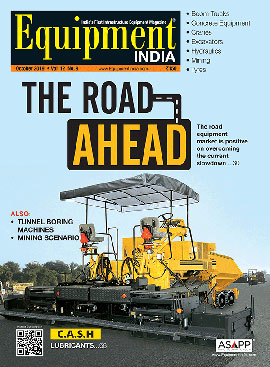
 +91-22-24193000
+91-22-24193000 Subscriber@ASAPPinfoGlobal.com
Subscriber@ASAPPinfoGlobal.com